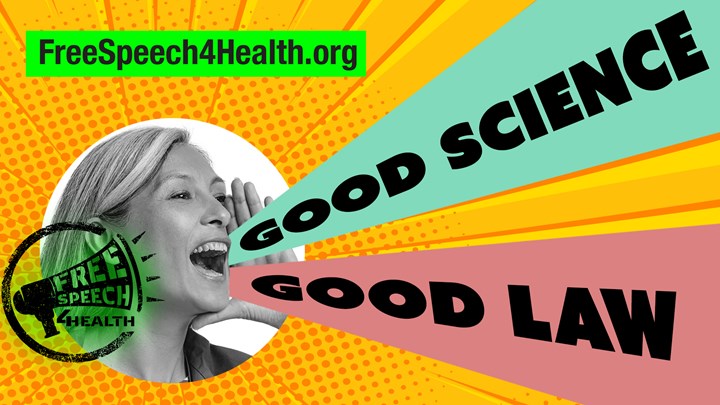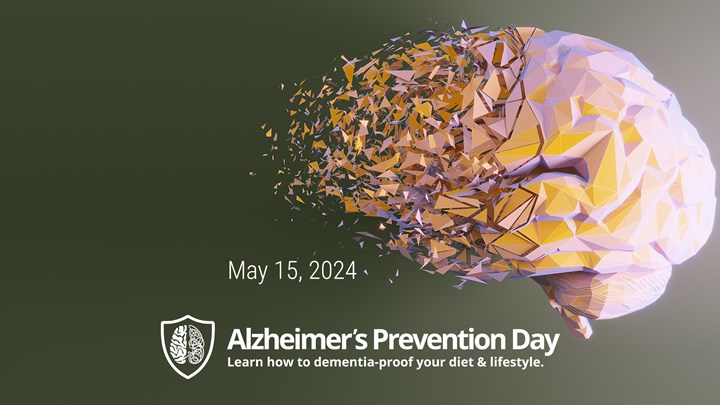Content Sections
By Rob Verkerk PhD, founder, executive & scientific director
Immune evasion, waning vaccines, lockdowns, covid passports – these are just a few of the things that dominate headlines as well as our lives. The technological solution most of the world has been taunted with, that became the thing so many craved for, as if it were a much anticipated brand spanking new iPhone, has turned out to be a very mixed bag. One that doesn’t work as originally claimed and one that can cause considerable harm to a small proportion of users in ways that are currently unpredictable. Data from the US Vaccine Adverse Event Reporting System (VAERS) that we analysed today reveals that between 1 and 2% of Americans whose adverse reaction to one of the covid vaccines is reported to VAERS, ends up dying within 28 days of being vaccinated. It may be a small percentage, but it’s a lot of people and tragic for the families and friends involved.
Having established that the vaccines don’t stop transmission very well, coercing children to be vaccinated when they very rarely suffer life threatening disease, as well as censoring communications on alternative early treatment approaches, such as those involving ivermectin, has to be seen as perverse. That is assuming you still believe this fledgling global health service that’s taken form during the pandemic is for our benefit. If it’s for the benefit of the stakeholders involved (and accordingly could be better described as a wealth service rather than a health service), it of course all makes perfect sense.
Here at ANH-Intl, as fully signed up members of “Team It Doesn’t Make Sense”, it is an ideal time to rethink whether this new, heavily politicised health system is something we really want, or really need. Is it actually fit-for-purpose, or even for our benefit? Or is its raison d'être more about benefitting undisclosed but fairly conspicuous businesses and individuals? US psychiatrist, Dr Peter Breggin, makes his views crystal clear in the title of his and his wife Ginger’s brand new book, ‘COVID-19 and the Global Predators: We Are the Prey.’
>>> Visit Dr Peter Breggin’s Coronavirus Resource Center and buy the book , ‘COVID-19 and the Global Predators: We Are the Prey.’ (please note the hard cover book is not yet available outside of the US and Canada)
Looking backwards to go forwards
Our Paleolithic ancestors were doing very well if they made it to 40 years of age.
That contrasts with our modern world in which the average life expectancy is in excess of twice this age. In Japan, Europe, Canada, Australia and New Zealand, the average life expectancy is over 80 years of age.
The historical record tells us that for most of our evolutionary history, life expectancy was pretty stable, with most adults not making it past 30 and certainly not 40. They’d then succumb to the elements, predators, lack of food, tribal skirmishes or disease.
It was only around 100 to 150 years ago that life expectancy suddenly went through the roof. In Europe and North America, this inflexion happened around 1870, while in Africa and much of Asia, it was delayed until around the 1920s.
So what caused people to suddenly start living a lot longer? Was it modern medicine with the arrival of vaccines and antibiotics? Probably not, because routine use of antibiotics and patented new-to-nature medicines didn’t really get into gear until after the Second World War. Vaccines had been used from Edward Jenner’s time and don’t seem to have caused population-wide effects evident from the mid-1800s.
Most credible analyses argue it wasn’t modern medicine, but improvements in three factors: sanitation, housing, and education, that were the main reasons lifespans started increasing so dramatically. Grandparents also appear to have quite a hand in it, all these factors contributing to big drops in early and mid-life mortality previously brought about by infectious diseases.
That set the scene for the Pasteurian view of medicine and healthcare, one in which ‘the problem’ (dis-ease) is seen as being outside the body: the germ is the problem and it must be targeted. It was the perfect backdrop for vaccines and antibiotics to become part of people's daily lives – and the way governments and health authorities have responded to covid-19 suggests nothing much has changed. Even ‘public health’ went mainstream, as more and more people came to understand the heroic work of public health nurses helping those in the most disadvantaged communities. Sadly, more recently, public health has been another victim of modern commercialisation.
To the here and now
Today, not only do many people in industrialised countries live well into their 70s or 80s, or beyond, we – in industrialised countries – also have a top heavy demographic; lots of older people, and many fewer youngsters. When you add into that mix an extended life expectancy but a shortened healthspan (years of healthy life), the quality of life of future generations doesn’t look so good. At least without a major change in how we go about managing our health.
The good news is there is already widespread recognition that existing systems are going to fall over sometime soon if they don’t change — and it’s now “time for a revolution” is well recognised.
That’s problem recognised. It’s not, however, solution agreed. Cutting to the chase, the underlying problem we have when people try to look for solutions to over-stretched health systems is they often fail to recognise that most health systems aren’t healthcare systems at all. They’re really disease management systems in which so-called healthcare services deliver health-related products or services, including prescription medicines that even “correctly prescribed” add up to being the third leading cause of death in society. The people on the delivery end of this supply chain are the ones who do well – those on receiving end don’t get nearly as much benefit as most think.
These health systems are also largely reactive, delivering primarily drugs and surgery after disease has been detected. The physiological pathways that underlie late onset diseases like coronary heart disease, many cancers, type 2 diabetes, Alzheimer’s and all the other chronic and degenerative diseases that are overloading health systems for which conventional medicine offers very little relief, are often deeply ingrained. That makes it both difficult (sometimes impossible) and very expensive to reverse.
This brings us to looking at the sustainability of health systems themselves. This has been a major area of work for us here at ANH-Intl. As we begin to see some light at the end of the covid tunnel, we’re getting back up to speed with this work we’ve been doing for over a decade. We continue to interact with doctors, other health professionals, scientists, labs, IT specialists and others in our bid to be able to set up a big enough, powerful enough, sufficiently well funded study of the community-based health system models we’ve been developing.
It’s exciting stuff – and we’re not unaware of a certain irony; while covid-19 has ushered in an authoritarian, top-down, silver bullet-fuelled health system, it is its likely failure and public rejection that will drive ever wider acceptance of a healthcare system that is genuinely for the people, owned by the people, and driven by the people. More than that – you don’t even have to go to a hospital, clinic or pharmacy to engage with it. That’s because you’re the key part of it. So wherever you go, your health system goes. That’s what our blueprint for health system sustainability is all about.
Next week, we’re going to show you how it can be applied to covid-19, that politicians and health authorities are already telling us now is set to get considerably worse as we approach northern hemisphere winter.
This is why we need a whole new healthcare system – a true health care system that’s proactive. That you can interact with, not just in clinics and hospitals, but also at home, in schools and the workplace.
It involves creating functional health across multiple systems within the body as well as in the social systems with which we as individuals interact. It includes a common language that individuals as well as health care professionals can use – so that everyone involved is speaking the same language and not getting lost in techno-babble that disempowers people and prevents them from making informed decisions about their own choices.
Most people who’ve suffered the worst fate following infection have been those with comorbidities that are linked to less than optimal functions of several systems, especially their immune, metabolic and cardiovascular systems. People like this – and more importantly – people who are set to become like this – don’t need a vaccine to fix their health. They need to recalibrate the underlying physiological mechanisms that makes their body not work as it should. That’s what healthcare is really about.
>>> Find out more about our Blueprint for health system sustainability, also known as the Great Health System Reset.
Join us next week to find out how you can use our blueprint system to help you be more resilient during the current crisis.
Please also share Rob Verkerk’s video that places our ‘blueprint’ into the current context.
>>> For more information on our Adapt Don’t Fight campaign, including all our covid-related content, go to covidzone.org
>>> To watch videos on a wide variety of subjects relating to natural health, please go to the video portal on our website (YouTube has deleted our channel for wrongly claiming that it contained ‘medical misinformation’)
>>> Become a Pathfinder member of ANH and access locked content such as this article, monthly live Q&As and much more.
>>> Back to Homepage








Comments
your voice counts
20 September 2021 at 5:27 am
You refer to the USA VAERS - CDC reporting system for adverse Covid19 inoculations reactions:
"that between 1 and 2% of Americans whose adverse reaction to one of the covid vaccines is reported to VAERS, ends up dying within 28 days of being vaccinated".
Are the number referred too here, allow for the HARVARD University Research Report that showed the VAERS system is inaccurate as only one (1) % of adverse events are reported? I think there was a small amount of tweaking the VAERS system when this PLandemic came into being - I am not sure what was done but the numbers are still not accurate according to reliable sources and also there have been significant numbers removed and also falsely claimed deaths as being caused by COVID19.
You also mention that in that para., that "the reaction to ONE of the Vaccines" is it one Vaccine only that is having this effect? if so which ONE?
Clarification of the above information would be appreciated..
Your voice counts
We welcome your comments and are very interested in your point of view, but we ask that you keep them relevant to the article, that they be civil and without commercial links. All comments are moderated prior to being published. We reserve the right to edit or not publish comments that we consider abusive or offensive.
There is extra content here from a third party provider. You will be unable to see this content unless you agree to allow Content Cookies. Cookie Preferences